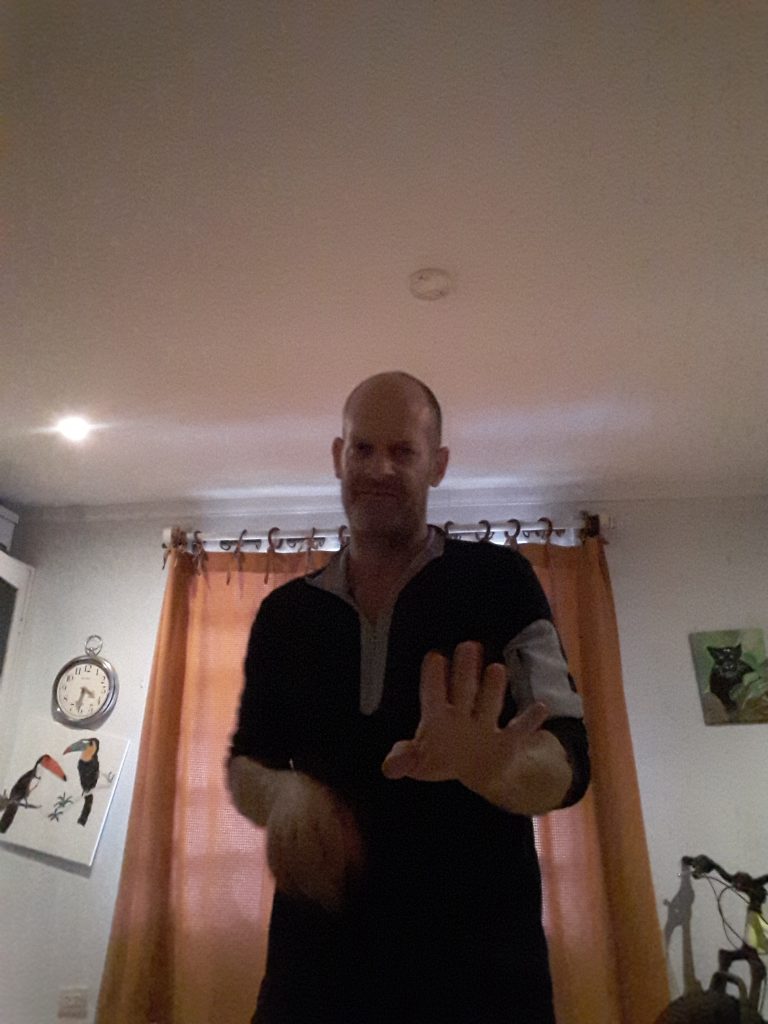*full-article written on Sunday, March 29th, 2020
This was the first thing I posted on March 14th, 2020:
“Remember how these events have generally developed throughout history stage-wise, should this all progressively get worse – and by all accounts it will. The repercussions of mass-fear-response are often felt faaar longer than the virus itself are. Inevitably hoarding, price-jacking, rioting, protests, store-sackings, mass-layoffs, education-pauses are inevitable. We’re seeing some of these already here. Each one of these presents different strategies and tactics to avert, mitigate, or manage.
Longer-term potential areas of concern: suicide, violence, crime, divorce, domestic-abuse, substance-abuse rates and other much-more affective elements will spike due to financial-loss and future-stability destroyed. Plan macro/long-term, not micro/short-term. I’m not fear-mongering but be aware of the phases that are historically-present as time progresses. And be conscious of how your actions and choices affect others and potentially impact your vulnerability with the above factors. Start now, not later. Being aware of how your behavior can be a detriment or contributor to a human-support system is part of your responsibility in a time of crisis. Whether you like it or not, at this point we’re in this together, and generally have to rely more on each other than our government.”

Now, regarding specific stages, here’s both what I see unfolding based on general human behavior patterning, past references, and some of which have come to fruition:
- Shock and disbelief. And we see this manifesting itself in 2 distinctly different ways. A) Utter horror. Freezing. Scared to react, indecisive, disconnect from steps that need to be taken and which state is most effective with which to achieve them. And B) A casualness that borders on delusional, denial of circumstance, refusal to accept the new reality and an active (though very likely unconscious) desperation to maintain the old normalcy. Both have played out here in real-time.
- Panic and fear. Paranoia, anxiety, immense stress. Realization of potential consequences and, with that, rash and irrational decision-making that is intended to make-up for the wasted time from above. We saw this with the toilet-paper, soap, cleaning-out of store-shelves, hoarding, price-jacking, etc. Played out in real-time.
- A period of relative calm. Gradual acceptance of current circumstance and a desire to get to some semblance of a routine, as much to convince oneself psychologically of the new norm and to “buckle-in” for the long-haul while the original shock is slowly alleviated than actual acceptance. I’m starting to see this now and we’ll see more of it in the coming days and weeks. Consider it the eye-of-the-hurricane.
- Unrest. People getting agitated and angry at the status-quo, blaming whoever they feel is responsible. Government, big corporations, politicians, God, other nations, etc. Blaming others unites groups of people and tribes. It builds and festers during some of the earlier stages and likely will hit at a crescendo when the shock and acceptance finally wear off and tensions start to grow within own households about where money/food/shelter/schooling will come from. Protests, disenfranchisement, anti-government sentiment start. Animosity between societal groups and classes. (ineptitude and ethics of politicians already won’t help here, to be sure) Pack mentality.
- Explosion, whether gradual or pockets of sudden and unpredictable. As people start running out of money and resources, tensions and anger and frustration hit a boiling point as society hits an “every man for himself” modality. Violence erupts in the streets, looting, riots, domestic violence and child-abuse peaks. Suicide, alcoholism, depression, and drug-use spike. Divorce, theft, violent crime, unemployment-rate and murder-rate rise. Chaos starts taking over as despondence hits. Knee-jerk reactions occur. And we’re ALL immune as, as I stated earlier, if the rest of the world is in full-blown panic, we all have to be as well to be able to respond to, understand intimately, and make decisions based upon that chaos. (Are you ready for this potentiality in the variety of areas pertinent to dealing with it?)
- The sun rises. People surprise when all are on the precipice. The crisis begins to subside. And, in spite of the far greater levels of collateral damage than the virus itself ever could have inflicted, a new normalcy returns as the storm has started to pass and the population craves some calm to re-build and re-establish a new normal. The long arduous climb back to stability, relative peace, and re-establishing futures begins. Maybe, if we’re extremely lucky, a re-setting of global values, essentials, basics, and focuses, though..
/cdn.vox-cdn.com/uploads/chorus_image/image/66227037/1201746525.jpg.8.jpg)
Make note that these things always build, with each stage being cultivated within the last or one previous. Overlap is part of the unseen/unconscious progression, they’re not spontaneous. To add, none of these phases have pre-assumed or pre-estimated durations and can go on for indefinite or long lengths. If there are potential 2nd- or 3rd-waves after a lull, repeat stages 2-6.
Now, there are, to me, so-called “wars” transpiring here on 3 different fronts.
- A potential shift of global power, though subtle. A war fought in far different ways than superior firepower or armament-accumulation. At minimum, very possibly a shift in the global-power structure, from West to East, for example. Note that, to this point, no western country is close to getting below the curve while a number of eastern ones have shown the discipline, self-control and social unity (for whatever reason…) like China, Japan, South Korea, Taiwan, and I believe Singapore, for instance. I’d say that’s hardly a coincidence, though I may be proven wrong. Inevitably, I see this decided by 21st-Century means (tech, science, medicine, non-physical, etc.), and between very different mindsets of what “war” even is, survived best and with greater rebound by countries with different qualities and strengths than we have.
- Attrition. Whether humans can keep their shit together, be unified-ENOUGH to get through this, care for their fellow human, and not lose their sanity in the process. As this draws-out, it won’t just be isolation we’re battling, but financial/resource-exhaustion, psychological/mental/emotional illness/damage, spiritual-hopelessness, future-bleakness, familial-disintegration, and a long recovery even after winning an attitrition battle. Some of us, simply, won’t make it out of this.
- The virus itself, which still seems to carry some variables and unknowns that could be problematic. Mutations. Second and third stronger waves. Anomalies, Time to a vaccine while curbing mortality-rates, etc. And remembering that the other two above are entirely dependent on this one enduring, it was the trigger-point for the other two even happening.

Regardless, those that come out of this the best will be those that can survive the longest on the least for those of us (be it individual, group, nation) with minimal resources – that “other” 98%. That find their mental-resolve, have their head around exactly what’s all transpiring here, and show the greatest self-control, discipline, and patience – and that will be tested in even the strongest.
Now, as always, there are intangibles involved here. The mutative capability of the virus and its ability to end life with anomalies that are making themselves known, currently contrary to what we’ve been told. (affecting children, young and otherwise strong men, some extremely-elderly starting to survive, etc.) The erroneous, misleading, or entire lack-of statistics and tracking of some countries for various reasons that may alter/effect any positive results others have made. China, everyone in Central America outside of CR/Panama, Russia, Mexico, Ecuador, Brazil, some in the Middle-East allll are purported to have diversely skewed statistics, whether for lack of technology, means, and capability to track viral origins/strains or intentional due to erroneous lack-of-controls and not wanting to lose their place in the pecking-order…playing tactics/strategies. The human element: people still simply do not understand the long-term ramifications of all this. I hate to bring up a perpetual buzzword but Dunning-Kruger has never displayed itself with such rigor. Confirmation biases are peacocks pluming their feathers. The opposite is true as well – people can and have surprised and united at the most daunting of times, as history has borne out. (Which people will we be…)
We here, in Costa Rica, are so far maintaining an exponentially-consistent growth on the curve, people are generally listening, and the government has handled their part quite well (admittedly) BUT that could all change in a heartbeat with the human factor loosening the strings, thinking the worst is over or a short-term crisis, or simply just being restless and missing the “old normal.” Very precarious at the moment as, maybe more so than the virus itself, we ourselves will determine how long the financial/economic strain will draw-out and how long the attrition that affects the psychological/emotional/mental/spiritual limits will last. A much better question that should be asked at this point than the perpetual “How long can this last?!!” is “How long do you want this to last and are you doing your part in your backyard to it lasts as short a duration as is necessary?” Time will truly tell….





















